Disclaimer: Any thoughts expressed in this article regarding health, diet and exercise, should merely be seen as opinions and not proper health and nutrition advice. Any advice regarding your health should come from a certified health practitioner. Never start a diet or exercise regime without consulting qualified medical practitioners.
The Difference Between Belly Fat and Curves
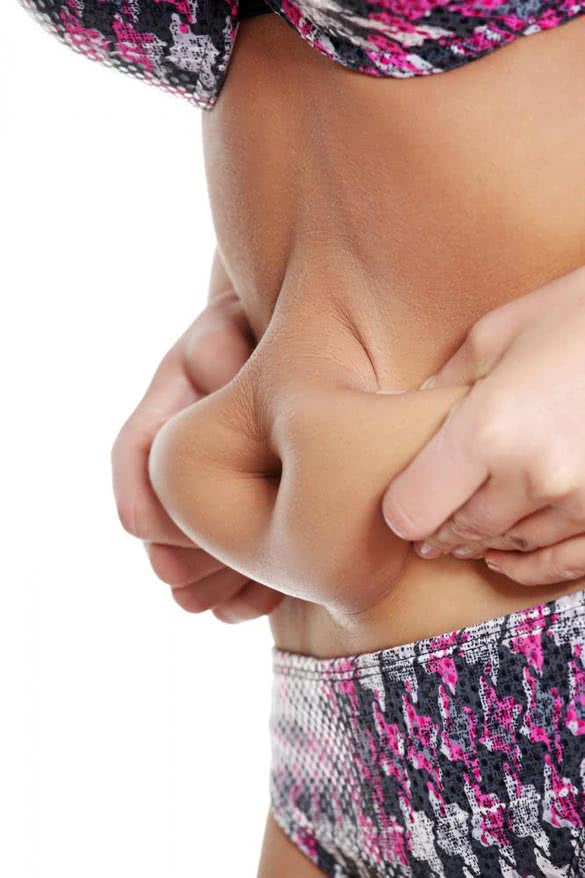
Some women grow up thinking that curves are great, others want to be a size 0 and both body types are equally beautiful. When I talk about getting rid of belly fat, I’m not talking about the kind that gives you nice curves. Curves are charming. Excess belly fat, however, is bad for your health and that’s the kind of belly fat you will want to get rid of.
What I’m trying to say is that in today’s society people often get caught up in trends of how the body should look. There is no one-size-fits-all. We are all born different. Getting rid of belly fat should be either to become healthier or to have the kind of belly you like, be it curvy or slim. It should never be about trying to get rid of every ounce of fat on your body or turn into an obsession. That’s not healthy.
Aim for health and happiness—nothing else!
Why You Want to Lose Belly Fat for Health Reasons
The best way to get motivated to do something is to know why you are doing it, so let’s have a look at that.
A little bit of belly fat, peripheral fat, is fine. However, when there’s excess fat and it starts getting nestled in among your organs (visceral fat), it’s not so good. This kind of fat has been linked to a number of diseases. These include cardiovascular diseases like heart attacks and strokes as well as diabetes.
Knowing that, you will want to focus on creating the kind of healthy lifestyle that gets rid of excess belly fat. It will not only prevent disease, it will make you feel happy and radiant, too.
Reasons for Excess Belly Fat—It’s Not as Obvious as You Think
So you have excess belly fat. That means you eat an unhealthy diet and you don’t exercise, right?
Of course, it might mean that. Diet and exercise often play a big part in weight gain. Other reasons might not be as obvious though. So, let’s have a look at them.
Stress and Belly Fat
One reason we often gain belly fat is because of stress. When we get stressed, so-called stress hormones get released. These hormones, in turn, can lead to our body to think that we need to stock up on energy, making us hungry and start building belly fat. The body is basically getting ready for a fight or for starvation.
It’s been proven that the hormone cortisol (one of the hormones released in excess when we are stressed) is linked to belly fat. In fact, this hormone might cause fat from other parts of our body, where it’s stored more healthily, to move to our belly. The best way to get your cortisol levels under control? Apart from de-stressing, the most effective way is to exercise.
Some general tips for decreasing stress include sleeping regular hours, eating nutritious food, meditating, having a job that gives you meaning and you enjoy, spending time with friends and family (joy and love work wonders) and working with a therapist or life coach if you feel you want to release emotional stress.
Another way to manage stress quickly is breathing exercises; whenever you find yourself feeling stressed, take deep breaths. If you are at home, have a couple of breathing exercises you can practice (you might not be able to do them at work, unfortunately).
Something I found very beneficial for letting go of stress was reading Healing Back Pain: the Mind Body Solution by Dr. John E. Sarno. He talks about how suppressed emotions (the ones we don’t even know we’re suppressing) can lead to pain and disease. I worked with his method when I suffered from RSI and it cured me in a matter of weeks (and I was in a bad way). What’s more, it helped me to heal emotionally. I was very stressed recently and I just picked up the book again. If nothing else, it will teach you just how powerful the mind is and that you can most certainly take charge of it to enable yourself to relax.
Irregular Sleep Patterns and Belly Fat
We need sleep. No surprise there. We also have something called the circadian rhythm, which works in harmony with the environment, telling us to sleep when it gets dark and get up when the sun shines. This is why you have a problem when all of a sudden you travel across the world and your natural rhythm gets disturbed (you suffer jet lag in other words).
The circadian rhythm also affects your cortisol levels. These levels are the highest in the morning until mid-day, which is when you should eat the most. Later in the day, they decrease and they should be at their lowest around midnight.
If you start messing up your circadian rhythm, you will mess with your cortisol levels. As mentioned previously, this can lead to perceived stress and accumulation of belly fat.
What’s more, when we get tired, we get hungry as we feel we need energy. If you stay up late, you will likely end up eating more just to stay awake.
Of course, some people tend to go to bed later, others earlier. The important part is to have a regular sleep pattern. Try to get to bed no later than midnight. For the sake of staying in harmony with nature, 10 PM is a better bet, but it seems there are some night owls among us….
Unhappiness and Belly Fat
This is partially part of stress-related symptoms, but sometimes we don’t perceive stress as stress, but rather as unhappiness. Maybe you’ve moved to a new city and you feel lonely. Maybe your boss is particularly horrid. Maybe you just lost someone close to you. You don’t necessarily perceive this as stress. You just feel sad or unhappy, but in truth, it’s emotional stress you’re under.
Emotional stress often leads to people eating something that has a lot of fat or sugar in it as it will give you a certain kick. This kick will temporarily make you feel better. In the long run, it will lead to more depression though as these kind of foods have a negative effect on the body, including affecting the chemicals in your brain that are responsible for you feeling happy.
Furthermore, eating something high in sugar will spike your blood sugar, only to have it crash a little while later, making you tired, lethargic and, you guessed it: hungry. Of course, this leads to eating even more.
I’m all for a hot cup of tea and piece of cake after a long, horrid day. I think emotional eating has its place. The issue comes if you eat sugary and fat foods all the time. You shouldn’t need comfort from food all the time. If you do, you need to have a look at the reasons why and resolve these.
Also, remember that resolving issues might include looking at their root causes, but beyond that you have to, well, move beyond the issues. There’s a book, which I’ve forgotten the name of, about a guy who discovered that many people in therapy end up unhappy because they keep thinking about what makes them unhappy and what problems they have as people and in life. What makes someone happy is to define a problem and then work on the solution. You need to focus on who you want to be and what you want to do.
Sunshine and Belly Fat
We were designed to be outdoors—not ten hours a day in the bright sunlight (that doesn’t make us feel good, does it?), but to be outside in the shade as well as getting our dose of sunshine. So whether it’s winter, spring, summer or fall where you are, try to get outside every day for at least half an hour, preferably an hour. For example, walking to and from your car or the bus to get to work/school and going for a fifteen minute walk during lunch break will work wonders.
This is important where belly fat is concerned because without sunlight we feel sluggish. And, if we feel sluggish, chances are we will reach for a snack or calorie laden latte to keep us going.
Breaks and Belly Fat
I will talk more about quick exercises that you can fit into your daily schedule later, but for now let’s just have a look at taking proper breaks at work.
If you work eight hour days, especially if you are standing up or sitting down all day, it’s important to take breaks. If you don’t, you will start feeling just as sluggish as when you haven’t had enough sleep or sunlight. And, again, that will lead to you reaching for a snack. It can also lead to increased stress levels, which, as we know by now, are not helpful in the least for losing belly fat.
Diet and Belly Fat
So, here comes one of the two big ones: diet.
Now, if you’ve read a magazine in the past five years, you’ll have discovered that there are as many opinions about diet and fat burning foods as there are people on the planet. For six months, one diet is “the thing” then another one comes along and takes over, and people who use the different diets all swear by them.
What all of them seem to have in common (and what seems like common sense too!) is the following:
- avoid heavily processed foods as they often contain substances that are harmful for the body, including too much salt and sugar, as well as unhealthy fats;
- avoid refined grains such as white bread, rice and pasta—rather have wholemeal grains;
- avoid too much of starchy foods like white potatoes and corn as they are broken down into sugars that spike your blood sugar;
- eat healthy levels of protein, fat and complex carbohydrates;
- drink plenty of water and herbal teas in between meals;
- avoid sugary foods—especially refined sugars, like white sugar, corn syrup and glucose—but also keep honey, maple syrup, fruits and such to a minimum (though definitively eat fruits and berries, just don’t overdo it!);
- eat plenty of raw and cooked vegetables in all the colors of the rainbow;
- avoid all hydrogenated fats and keep animal fats to a minimum unless it’s fish; and
- avoid unnatural “diet” sweeteners such as aspartame; rather use more natural alternatives like stevia and xylitol (though keep the latter to small amounts as it has a laxative effect).
When diet advice first started circulating, everyone seemed to believe that removing all fats would be helpful, but the body actually needs fat to be able to burn fat as well as to function in general. Also, all those “fat reduced” products often contain the unhealthy fats. Often, they also contain sugar such as flavored fat free yoghurts.
Most people find that if they start eating a whole foods diet, free of processed foods, white bread and pasta as well as refined sugars, they do lose weight.
Fast Weight Loss Dieting Tips
Lately, research seems to have shown that there is a difference between calorie types—the body appears to respond differently to calories coming from different sources. For example, it seems that people on a raw diet (that means the food has not been heated above 40 degrees Celsius, so as to keep enzymes and nutrients alive) don’t absorb as many calories as people on a cooked diet. Therefore, people on a raw diet often seem to lose weight very quickly.
Other diets popular for fast weight loss are the Atkins and Paleo diets. Both diets emphasize eating meats, eggs and fat as well as non-starchy vegetables, while refraining from eating starchy vegetables like potatoes, sweet potatoes and corn as well as grains like rice, oatmeal, bread, noodles and pasta made from grains. The diets do differ from one another, but both are protein heavy. Opinions on fruits seem to vary, but often they are excluded due to high sugar content, especially in the Atkins diet. What people sometimes forget is that non-starchy vegetables and certain berries can and should be a big part of these diets.
It’s important to remember that if you stay on a diet like the ones above for a longer period of time, you need to ensure you get the nutrients you need. Raw vegans sometimes don’t get enough protein and B vitamins, while people on the Atkins diet end up with constipation as they don’t eat enough vegetables and fiber (and about every study ever done shows that fiber is good for your health).
Juice Fasting
Another way to lose weight fast is through juice fasting. This is something that might need to be done with medical supervision though.
Juice fasting has been made popular by people like Jason Vale who offer retreats where you go on juice fasts as well as books about the hows and whys, including recipes.
Some people say that juice fasts do not work to improve health and should be avoided, but it’s hard to argue the health benefits those who have tried them for longer periods of time have reported.
A good place to start, if you’re interested in doing a juice fast, is to watch Jason Vale’s documentary on the topic as well as the film Sick Fat and Nearly Dead by Joe Cross—a man who changed his entire life through juicing.
Do bear in mind that juice fasts are temporary. While some people have done them for months, you need to ensure you don’t do them for too long due to potential health hazards. You may also want to do blood tests and other medical tests during this time to measure your progress. This is what many people who ended up writing books/making movies about the topic did—that way they could ensure they had proof for their health claims.
Diet and Longevity
Now, this is an article about losing belly fat, but I want to have a general word about diets and dieting as well as some people who want to lose fat quickly get stuck on the diet aspect.
I’ve read a lot about different diets in relation to health, and I started getting confused about the information out there. One book claims a vegan diet is best for your health, backing it up with plenty of studies. Another book claims that eating a diet high in animal protein and low in grains is best for your health, also backing it up with plenty of studies. Which left me confused as the diets were pretty much polar opposite of one another. The only thing they had in common was that they prescribed natural whole foods—nothing processed, nothing with additives in it.
I got curious as to how diet affects longevity and started googling average lifespan in different parts of the world, bearing in mind that many other factors affect longevity. This is when I came across something called “the blue zones”. The blue zones are regions in the world where people live longer than normal. In other words: these are the places where it’s normal to reach a 100 years of age or older.
Looking at the blue zones, I found many (though not all) of the people ate diets high in legumes and vegetables and low in meat. They ate home cooked and unprocessed foods. Often organic. Other factors included low stress levels, exercise being part of life due to daily activities (like walking, gardening, social activities, etc.), a sense of community and putting family first.
If you want to find out more about the blue zones, you can have a look at Wikipedia or read Dan Buettner’s book about them. For now, bear in mind that going on a very specific diet for too long might not be a long lasting solution.
Tips for Losing Belly Fat with Diet
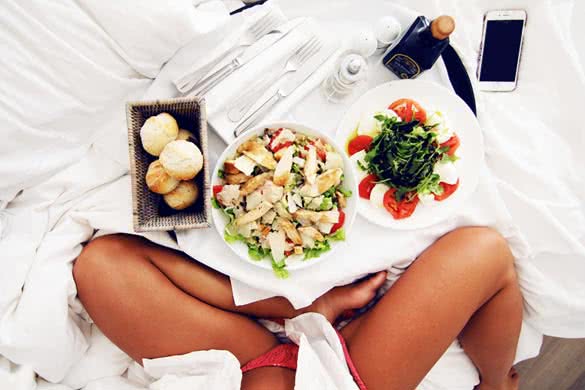
Say you don’t want to do an extreme diet change, but rather just eat a natural, whole-foods diet. What are some tips for losing weight on this kind of diet?
- Drink plenty of water between meals as this will suppress hunger. Often, when we eat, we are merely thirsty.
- Eat a salad before every meal; this will fill you up and prevent you from pigging out on higher-calorie foods.
- Don’t eat anything four to five hours before your bedtime.
- Avoid too much of sugary and starchy foods (like potatoes) as well as too many grains. If you want to use a sweetener, try xylitol or stevia (the latter has a weird aftertaste, so use it in dishes were the taste is masked and combine it with xylitol, honey or maple syrup if you need to).
- Allow yourself one day a week when you eat whatever you feel like; see it as a treat.
Exercise
The other “biggie” when it comes to losing belly fat is exercise. To get a toned stomach, it helps to get your stomach muscles working. To lose body fat in general, cardio and strength training will help. Beware that muscles weigh more than fat and that your weight is not necessarily an indication of how much fat or visceral (bad) body fat you have. Furthermore, muscles will help to pump blood around your body, supplying oxygen to your various body parts and organs, which is necessary for health. Cardio will help to lower your resting heart rate, which is also good. And that’s just scratching the surface—moderate exercise has shown to be good for just about everything where health is concerned.
Another reason to exercise regularly is that it affects the chemicals in your brain, releasing chemicals that make you feel happy (“happiness hormones”). As discussed previously, being happy means that we avoid using food for mood boosts (though it’s totally OK to have a pig out on Ben and Jerry’s when you’ve broken up with someone. Combined with romantic comedies, it’s a total life saver—as long as it’s followed by healthy habits!).
One thing to watch out for is becoming addicted to exercising. An hour a day is healthy. Trying to forget your problems by constantly exercising is not.
What Kind of Exercising will Burn Belly Fat?
Crunches, right? Working the abs…but that’s not true! Cardio will help to reduce belly fat more so than any other exercise. To get a toned belly, you will need to exercise your abs though, but first, let’s have a look at the cardio.
Cardio

When you walk, bike, jog, dance, swim, do marital arts, practice hatha yoga, do pilates and other forms of aerobic exercise, you burn fat. This is the most effective way of losing fat all over your body. You cannot target one specific area to burn fat there.
When it comes to belly fat, the most important fat to get rid of is your visceral fat. That’s the fat you cannot see, but rather what surrounds your organs. This kind of fat is often a result of poor diet, stress and lack of exercise. No amount of crunches alone will get rid of this kind of fat—you have to use cardio.
Short Bursts of Exercise

One thing that might spring to mind immediately when hearing you should exercise more is “lack of time”. Exercising doesn’t need to take up that much time, but it is time well spent. You will spend a lot more time being sick if you don’t do it. Knowing that you can prevent depression, cardiovascular disease, diabetes and potentially even cancer should be reason enough to spend 30-60 minutes a day exercising.
Tim Ferriss talks about doing two-minutes exercises before each meal in his book The 4-Hour Body. He says that if you work your muscles just before a meal, the body will focus on building more muscles when receiving the nutrients as opposed to creating more fat.
Here are some tips for easily fitting it into your busy schedule:
- Take a fifteen-minutes brisk walk during lunch break. Not only will it get your blood pumping, it will also allow you to get your much-needed vitamin D through sun exposure.
- If you have a job that requires you sit down most of the day, get up once an hour to stretch your legs; make some herbal tea, walk around the office, go to the bathroom…whatever you do: move.
- Before each meal, do Tim Ferriss’ recommended two-minutes exercises from The 4-Hour Body. There’s no excuse for not doing these exercises as they can be done anywhere—at work, you can do them in the bathroom! You can do other two-minutes exercise routines as well—just put together whatever moves you feel will incorporate all the larger muscle groups. Feel free to do them at other times during the day as well. You can even do these things while cooking (I often exercise my legs while doing the dishes; you have to have some unique quirk), or why not dance and cook?
- If you’re at home, turn on the radio and dance for one or two songs.
- Park your car or get off the bus slightly further away that where you normally would.
- Run up a few stairs; if you have stairs at home, take a break every so often and simply run up and down once or twice. Also, when possible, walk up the stairs or escalators when out and about.
- Start your day with a ten-minutes workout and stretch; it’s a great way to wake up.
- Combine cardio with something social like going on a hike with friends or going for a walk and picnic on the beach. Paintballing, climbing, surfing, obstacle courses, beach volleyball, dance parties (like swing dancing parties, or latin parties) and so forth are all very active things you can do with friends.
Building Muscle
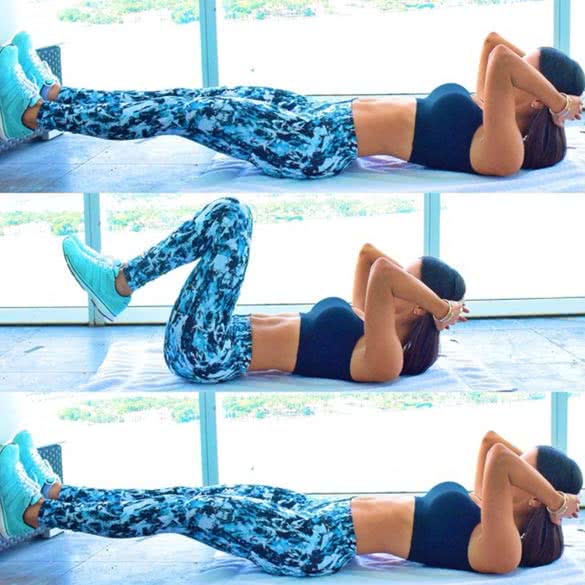
Building muscle will also help to burn belly fat as you need calories to maintain muscle. This means that the more muscle you have, the more calories you burn. Needless to say, that will also help to ensure that the food you eat doesn’t turn into fat.
If you go to the gym a few times a week doing weight training, this can greatly increase your muscle mass. There are exercises you can do without weights as well that can help build muscle. Crunches, push-ups, squats, etc. all help build to muscle if you do a couple of reps of each.
There are plenty of programs out there to help you build muscle. You can use videos you find on YouTube as well as DVDs and downloads. Popular ones include Shaun T., DDT Yoga and P90X. If you google any of these programs together with “inspirational transformation” you will find inspiration. One example is Arthur Boorman, a Vietnam veteran who couldn’t walk until he started doing DDP Yoga. (And no: I’m not getting paid to promote any of these people/programs.)
Ab Exercises
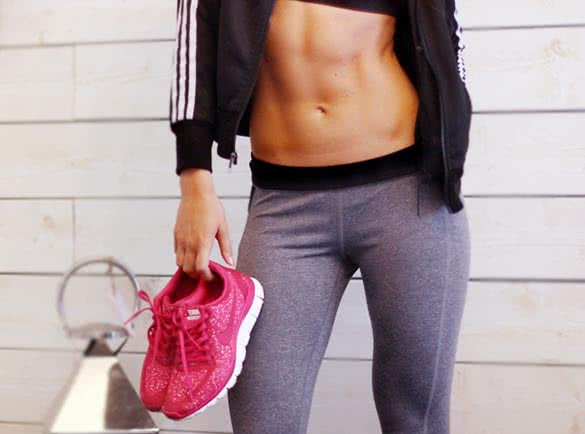
While ab exercises won’t target belly fat in particular, they will help you to burn fat in general and work your abs, which will tone them. If you’re looking to get a six pack, you have to work your abs.
Working your abs isn’t just about doing sit-ups/crunches. You work your abs when you walk, especially when you walk briskly, pulling yourself up as you do so and keeping your abs firm (in other words: don’t slouch and relax your abs completely as you walk!).
Doing the plank as well as push ups will also work your abs as will many pilates and dance exercises. If you find crunches boring, you could try belly dancing instead! It’s definitively more creative, and you might just seduce someone in the process….
Abs are important as they are the center of your body. They are what’s referred to as your core, together with your back muscles. Dancers are told over and over again to strengthen their cores.
You need to do different kinds of ab exercises to tone all your ab muscles. Apart from regular crunches, try those where you twist (if you hold your hands behind your head and lie in a supine position, then your right elbow should touch your left knee as you come up). Also, do exercises where you lift your legs up as opposed to constantly bringing your torso to your legs.
A very good workout for your abs is Tony Horton’s Ab Ripper X (it’s currently available for free from Horton’s page; just scroll to the bottom of the page). It takes about 15-20 minutes (it goes quicker when you learn the exercises and don’t have to listen to Horton’s talk in between each one) and gives your abs a very thorough workout. So thorough in fact that you might not be able to stand straight the next day. If you don’t have 20 minutes that day, you can still do the exercises, just less of each one.
As with any muscle group, you shouldn’t do intensive training of your abs every day. Two to four times a week is sufficient. In between, do cardio like brisk walking (your abs will get a workout from this as well, just not as intense) or swimming.
How not to Fall Off the Bandwagon
When we start something new, like doing more exercise or eating more healthily, chances are we’ll fall off the bandwagon at some point. Maybe we go on vacation and when we come back we aren’t motivated anymore, or we have a difficult period at work and all we do is work. There are weeks when exercising and going home to cook healthy meals might not be our first priority. That’s OK. The important thing is to get back to it as soon as possible.
There are also a few tips for sticking with the lifestyle changes you are making, so let’s have a look at those.
Don’t Do Too Much Too Soon
If you decide over night to become a raw vegan who exercises for an hour a day, when you currently don’t exercise at all and eat a mainly fried-foods diet, you’re likely to fail. For some, going “cold turkey” works, but for most of us it’s overwhelming adjusting to a completely new diet and workout regime over night. Food is actually similar to drugs: when you first give up on bad fats and processed sugar, you experience withdrawal symptoms. If your diet goes from really bad to really good over night, you might end up with headaches for two weeks. Many people have also reported catching bugs, like a cold or flu, when the body detoxes. Furthermore, going from a diet with very little fiber to a lot of fiber will likely lead to diarrhea.
The most problematic part isn’t always the body experiencing various symptoms, but the fact that you might not have figured out what to eat at first when changing your diet. Suddenly, you have to think about creating meals three times a day you’ve never created before. That takes up a lot of time and energy unless you can afford to buy ready-made meals and eat out at restaurants.
My recommendation when changing your diet is to start eliminating/changing various foods systematically. For example, in the first week, cut out refined sugars and switch all grains to the wholemeal variety (brown rice, wholemeal bread and pasta, etc.). That means that if you’re used to eating a cake every day (refined sugar and refined flour) you need to find another, healthier snack. Likewise, you might have to exchange the sweetener you use for your coffee, what kind of grains you use for dinner and what kind of bread you use for your sandwiches. That’s quite a few changes right there!
You can also choose to change it one meal and one drink at a time. The first week, change your breakfast habits, the second, your lunch and the third, your dinner. After that, change your snacks and what kind of drinks you drink.
When it comes to exercising, going from not exercising at all to spending an hour in the gym every day and going for a walk at lunchtime might feel like a challenge. It’s better to start with the walk at lunch one week and the next week incorporate two days at the gym. The week after that you can do a morning warm up when you get up, the daily lunchtime walk and three days at the gym.
If it Doesn’t Work Out

You might also discover that the gym doesn’t work out for you as you don’t have time to go there, stay for an hour and then go all the way home again. Turns out you’ve been a time optimist and you simply don’t have that time. Then you have to find another solution. Maybe try the shorter exercises in P90X as well as Shaun T’s 25T workouts, which, you guessed it, last for 25 minutes each. This way, you don’t need to drive to the gym and you spend 25 minutes exercising as opposed to one hour.
On the contrary, it might turn out that you don’t like exercising on your own and the only way to get motivation is to join group exercises at the gym or doing dancing, marital arts, yoga, etc. Maybe you prefer to go to salsa nights at your local club and walks in the city with your friends—that’s also fine. Just make sure that you move about a lot! Incorporating a little bit of strength training is also very good, so maybe that’s where you can force yourself to do ten minutes a day on different muscle groups or head to the gym once a week to train with weights.
Simply experiment and find what works for you. You need to be flexible and look for solutions as opposed to giving up as soon as you hit a bump in the road.
Pig Out and Take a Break
You don’t have to exercise every day; it’s important to take breaks or you will tire quickly. If you exercise five times a week and feel like spending the remaining two days with friends, having fun with them, then do so.
Likewise, it’s perfectly fine to eat whatever you want once a week or have cake at your friend’s birthday party. The important thing is to learn the difference between one or two treats a week and ten treats a week.
If you have a problem tracking food and exercise, finding that this week you only exercised twice and had treats on four days instead of one or two, you need to start a diary. Simply write down what you do as it will keep you accountable.
In Closing
As you can see, losing belly fat is actually not that difficult—not if you make gradual changes to your lifestyle and start incorporating new things in a way that works for you. And, the end result is a happier and fitter you, which will make you feel amazing!









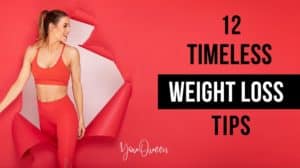
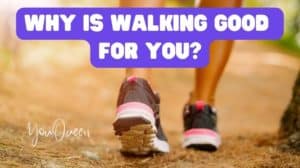
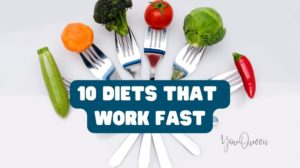
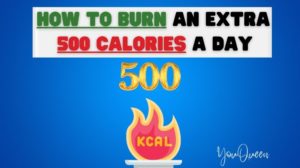


Hey! This is an excellent article! I was sort of surprised having arrived here randomly while procrastinating. I really appreciate the wisdom, body positivity and holistic approach you’ve taken to a well-worn subject. Kudos.